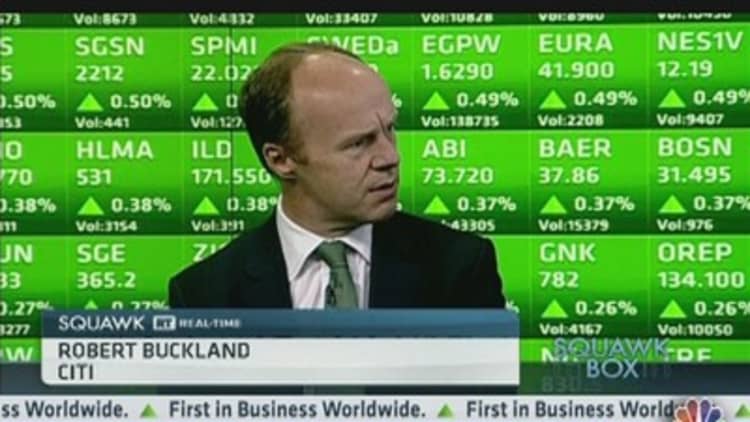The end of the emerging market bull run is upon us, Societe Generale boldly stated last week. While this may seem an overstatement to some, several other analysts have also turned bearish, forecasting worsening currency and bond outflows.
"This is the return of a top-down market, mainly reflecting the surfacing of the global liquidity retrenchment as the major driving force. This is also the end of the GEM [Global Emerging Market] bull market," said Societe Generale's head of emerging market strategy, Benoît Anne, in last Thursday's research note.
"At this point, we want to favor defensive strategies, including selling EM [emerging market] foreign exchange as well as positioning for higher rates and steeper curves."
(Read More: BRIC Powerhouses Risk 'Middle-Income Growth Trap')
Jens Nordvig, global head of foreign exchange strategy at Nomura, concurred, saying that disappointing growth news from China and Brazil, and a few other countries, does not justify the sharp sell-off seen in the last week.
"There is little doubt that the spike in U.S. yields has played a key role. In addition, disappointment about global fixed income buying from Japan has been an additional factor," Nordvig said in a note on Monday.
Yields on 10-year benchmark U.S. Treasurys rose above 2 percent on May 22, after the Federal Reserve's latest policy minutes sparked fears the central bank could start tapering off its bond purchasing program at soon as this month.
Shortly afterwards, EM currencies began to tumble. For instance, South Africa's rand has since tumbled 3.5 percent against the dollar, the Indian has fallen 2.2 percent and the Malaysian is down 2.35 percent. Meanwhile, the yuan, the Vietnamese dong, the Russian ruble, the Mexican peso and the Brazilian real have all clocked-up declines against the dollar this year.
(Read More: Coca-Cola in 'Frontier Market' Myanmar)
"We hate to be the bearers of bad news, but the way we look at it, there is more reason to argue that the weakness in EM currencies may be structural (years or longer) than transitory," Bhanu Baweja, a foreign exchange strategist at UBS, said in a research note last week. Baweja has previously recommended buying the dollar against a basket of currencies, including the rupee, ringgit, Thai baht and Taiwanese dollar.
Local currency-denominated EM debt has seen a similar sell-off, after a positive start to the year. Pimco's "EM advantage local bond index" exchange-traded fund rose 5 percent at the beginning of the year, but gains have since been wiped out. Similar moves have been seen in emerging market funds from JPMorgan and BoA Merrill Lynch.
Research from Nomura showed that EM bond flows turned slightly negative last week, for the first time in nearly a year, falling by $0.2 billion.

"The EM sell-off has been much more fixed income-focused than equity-focused...correlations between EM bonds and foreign exchange have shifted to high levels; a sign of indiscriminate position liquidation," Nordvig said. "The flow picture and the trend in U.S. rates markets are likely to be key in the next few weeks."
(Read More: Sell Emerging Markets in May, and Maybe June and July Too)
Meanwhile, Patrick Perret-Green, a macro strategist at Mint Partners, said European junk bonds may be the next to get hit.
"Probably a good time to look at high yield hedging strategies," he said in a note on Monday. "It is important to note that real money redemptions have barely started."
—By CNBC.com's Matt Clinch. Follow him on Twitter @mattclinch81.


